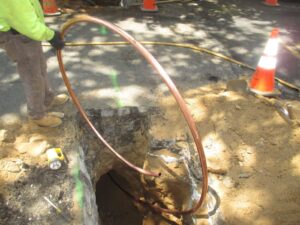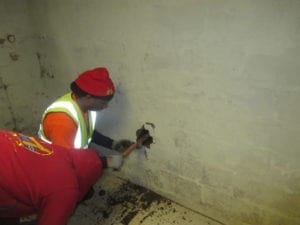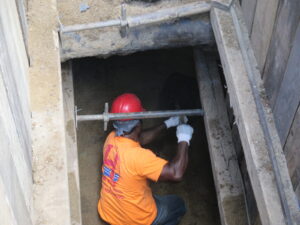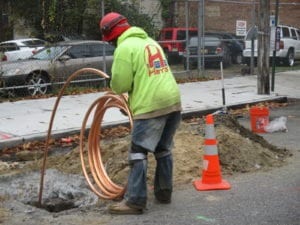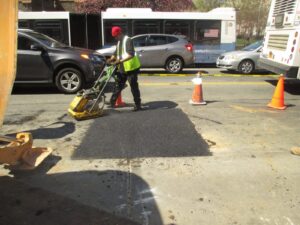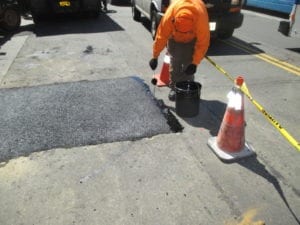To assist in understanding details included in the below article, it is suggested to watch a brief video on the water main installation process here
When installing a copper water main, there are several cost variables a homeowner should be aware of. Each borough, neighborhood and street may have different factors which lead to a large variance in price from one property, to the next.
The first factor to consider is where the city main is located on your street. In most cases each street has one city main, and may be located on your side of the street which is known as a “short water”. In other cases the city main is located on the opposite side of the street, which is known as a “long water”.
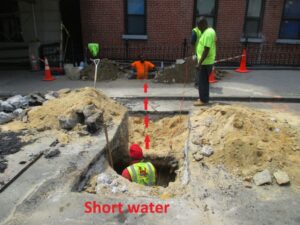
A long water will result in additional cost from a short water due to the additional material, labor, time and restoration it will take to cross the roadway. Pending the neighborhood conditions and borough, a long water may range anywhere from $600 to $2,000 in additional cost.
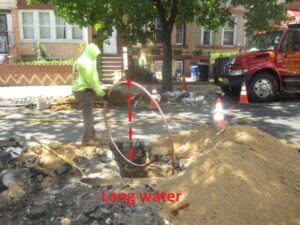
The second variable is the size of the water main required to replace the existing pipe. If you currently have a ¾” pipe, it is required to upgrade the size to 1” at a minimum. There are other factors that should be discussed with your on-site estimator, which may lead to an even larger size pipe. The material cost is the least costly aspect of the water line installation process and accounts for approximately 20% of the overall installation cost.
|
1 1/4″ copper install |
1″ pipe from street |
Another costly factor is determined by when the roadway in front of your property has been resurfaced by the DOT. If the roadway has been resurfaced within the previous 5 years, it is considered a “protected roadway”. The DOT requires a specific set of rules to be followed when working on a protected street. The first requirement is to have a soil compaction test completed on the soil that is being backfilled into the roadway. When the roadway is ready for backfill and testing, the plumber must notify the DOT who will most likely be on site to inspect the soil testing. The soil compaction test is practiced to make sure that the density and moisture of the new dirt is up to DOT standards and will not compromise the integrity of the roadway.
|
Stanley – 20+ years experience |
Franklin- 20+ years experience |
The overall labor cost usually accounts for 20% of the installation cost. Most larger and experienced companies will hire technicians with a minimum of 7 years’ experience. This requirement does drive up the installation cost, this is a price most homeowners are usually willing to pay. A smaller and less experienced company may hire technicians and laborers with minimal experience to keep the cost down. The underlying concern with this business model is whether the job is being completed properly, everything from the piping itself, to the backfilling of the roadway. Would you pay a $400 premium for experienced technicians?
The permit cost is a fixed cost which is paid from the licensed plumber, directly to the DOT and DEP. On average the permit cost is 10% of the overall job cost.
Final restoration of the roadway and sidewalk is the final part of the job and is usually completed on a separate day from the initial piping installation and backfill. Most long waters result in two 4’x4’ holes in the roadway and most short waters result in one 4×4’ holes
|
Final restoration of roadway |
Sealing restoration |
There are other factors which may differ by location resulting in additional cost to your water line installation. The first would be if the water main leak has caused an undermine under the roadway. This may result in a great deal of time, material and labor if you have a large sinkhole in the roadway.
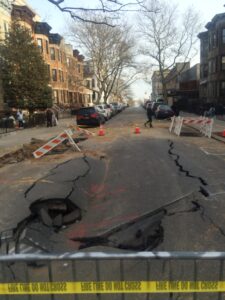
If the sinkhole is small as displayed below, it may add minimal cost to your installation.
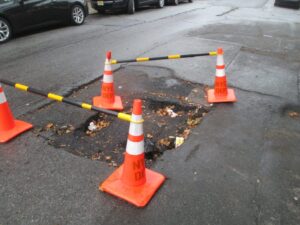
There are also sections of the 5 Boroughs which are notorious for large rock which result in challenging work conditions. Any experienced plumbing contractor should be aware of the neighborhoods and boroughs which are known for challenging conditions and will definitely have an impact on your job cost. These challenging conditions may require trenching of the roadway as opposed to making tunnels below ground to install the copper. Trenching always results in additional time and restoration cost.
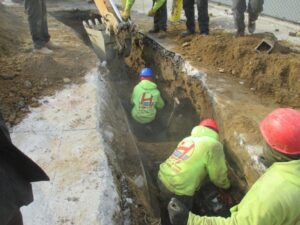
For over 98 years of experience, contact the Harris family for a free on site estimate



